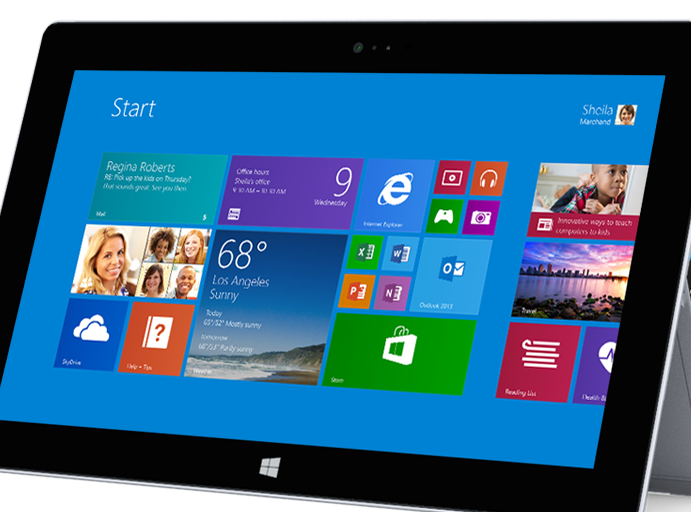Microsoft starts de-emphasizing the Desktop with Surface 2

A number of us who've been using the ARM-based version of Microsoft's Surface (and the underlying Windows RT operating system) have been wondering how long it might take Microsoft to remove the Desktop completely from the platform.

We still don't know when Microsoft will pull the Desktop plug, but it appears the company has taken a first step in that direction.
Microsoft has removed the Desktop tile as one of the default Start Screen tiles displayed on its second-generation Surface 2 devices, as first reported by Tom Warren at The Verge. (I'm betting the situation may be the same on Nokia's just-announced Lumia 2520 ARM-based tablet.)
The Desktop has not been removed. It is still there on the new ARM-based tablets. It is still listed as one of the apps installed by default on new Surface 2 devices. But it's not pinned to the Start screen, like it was with the first-generation Surface RT devices.
The Desktop is currently required, even on ARM-based devices, in large part, because most of Microsoft's core Office programs are not yet available as Metro-Style/Windows Store apps. There is a Metro-Style OneNote and a Metro-Style Lync client, but no Metro-Style Word, Excel, PowerPoint or Outlook apps. There are Metro-Style versions of Word, Excel and PowerPoint coming (codenamed "Gemini"), but they aren't expected to be available until some time in 2014. (My tipsters say around "summer.")
I just received from Microsoft my Surface 2 review unit on October 22, the date the devices went on sale. Because I used my existing settings when setting up the device, a Desktop tile did automatically install for me on my Start Screen. But for those who haven't used Windows RT before, the Desktop tile won't automatically show up as a Start Screen tile.
"If you want a Desktop tile (ala Windows 8.0 RT), you can go to All Apps, and the Desktop tile is in the list of apps there," a company spokesperson told me when I asked. "Simply right-click, or press-and-hold (with touch), and you can pin it to the main Start screen and make it as large as you want.”
What happens once a user opens a Desktop version of Word, Excel or PowerPoint, I asked. The response:
“The only desktop apps without modern versions which run on RT are the Office apps: Outlook, Word, Excel, and PowerPoint. In order to streamline access to them, we pinned those apps directly to the first page of Start. Clicking any of these takes you directly to that Desktop app. You can also bring up the switch list from the left edge if you have a Desktop app open and click Desktop to get back to the Desktop."
But back to Gemini for a moment. Microsoft execs have gone on the record saying that they are (understandably, for competitive reasons) not going to deliver touch-centric versions of Microsoft's Office suite for non-Windows platforms before they do so for Windows. I heard a while back that the target for iOS and Android tablet versions of Microsoft Office might be Fall 2014 — which makes sense if you believe Microsoft won't get its own Gemini suite out much before Summer 2014.
After Apple's announcement yesterday that it plans to drop the price of its own iWork Office apps to zero (from roughly $20 for the full suite), it's been interesting to see some of the reactions. They've spanned everything from Microsoft is really doomed now, to Microsoft must immediately release Office for iPad. Ironically (or maybe not), many of those spouting these sentiments are the same ones who've been predicting no one will want or care about Office on the iPad.
I'm happy I'm already getting Office apps — albeit ones that don't support macros — available for free on my Surface. (Update: Previously, these apps were missing a number of features in their full-fledged cousins, but now they're only missing macro support.) I'll be happier when I get more touch-first versions of them for my ARM-based device. But Desktop or no Desktop, it's nice to have them there for the relatively few times I need to use them.